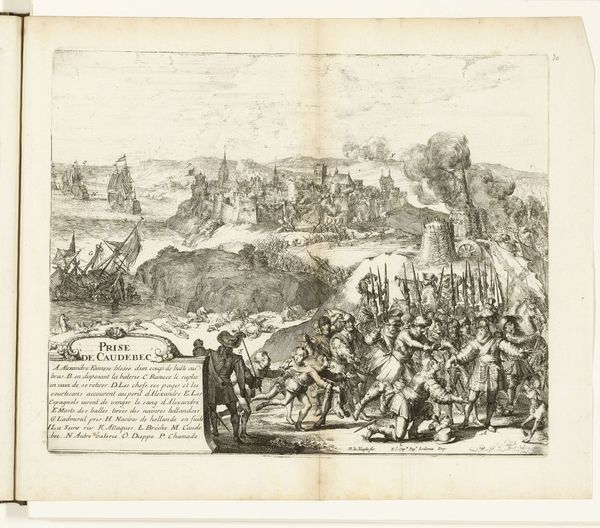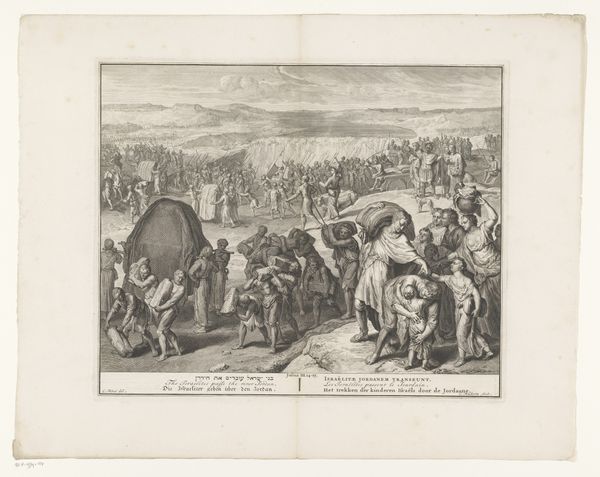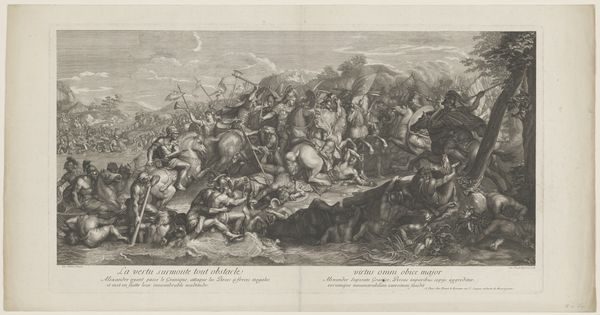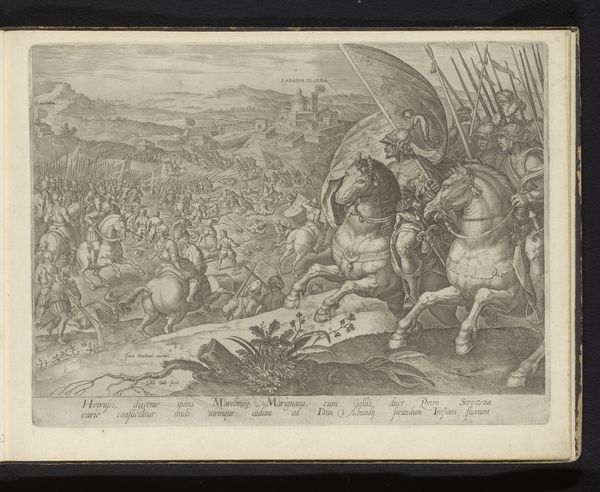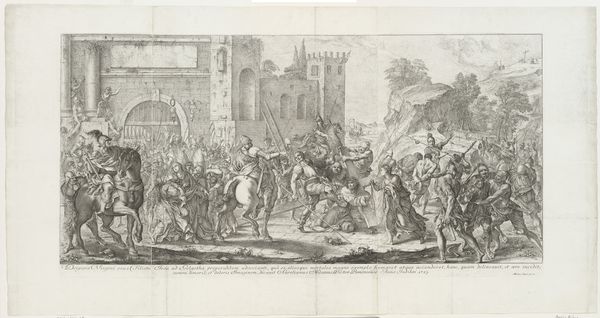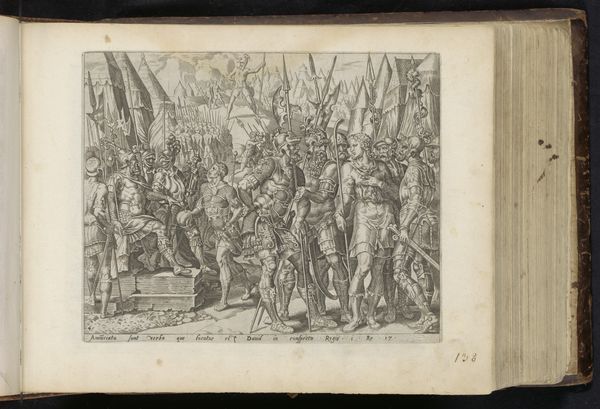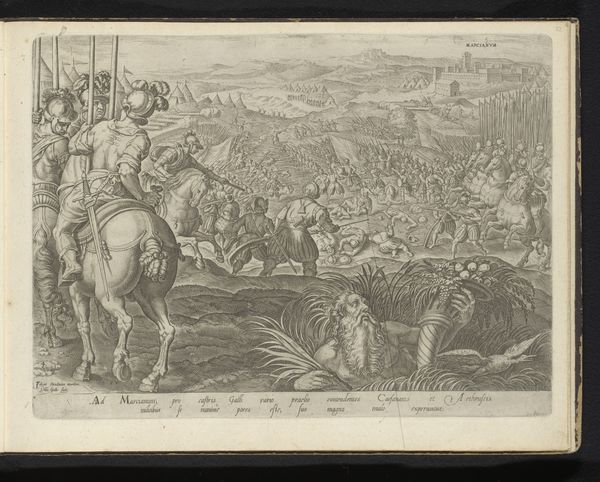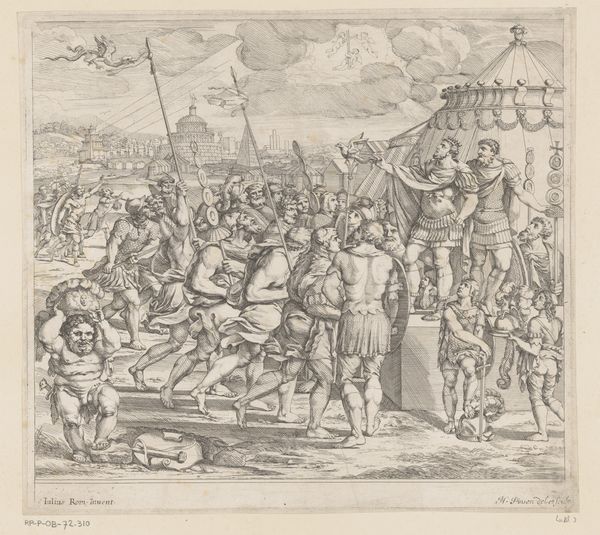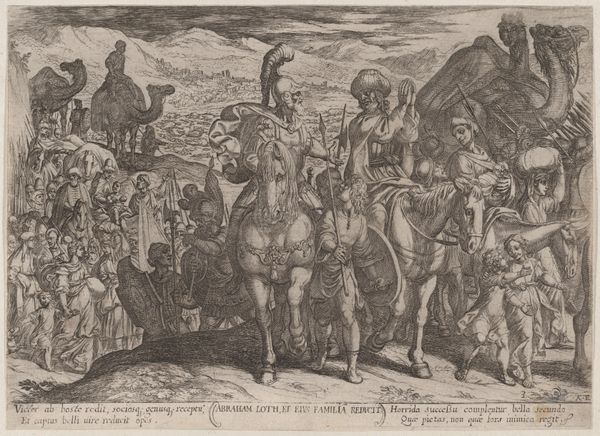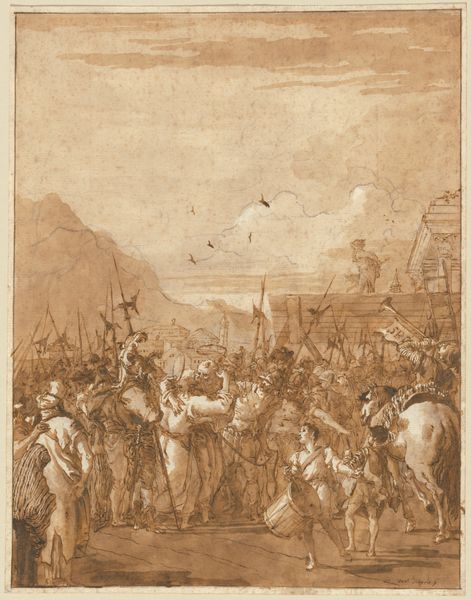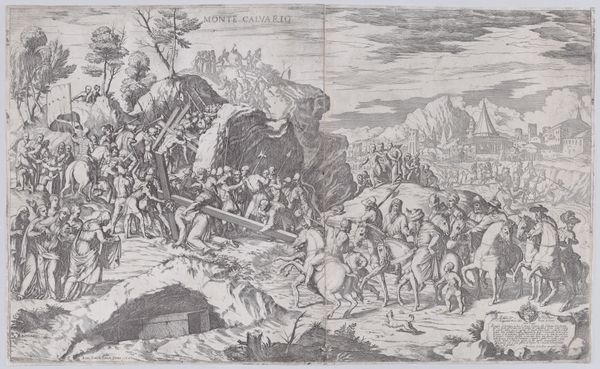
Abraham trekt met zijn 318 manschappen ten strijde tegen de vier koningen 1595 - 1638
0:00
0:00
drawing, print, etching, paper, ink, engraving
#
drawing
#
narrative-art
#
baroque
# print
#
etching
#
landscape
#
figuration
#
paper
#
ink
#
coloured pencil
#
line
#
history-painting
#
engraving
Dimensions: height 280 mm, width 397 mm
Copyright: Rijks Museum: Open Domain
Editor: This print, made between 1595 and 1638, depicts "Abraham leading his 318 men into battle against the four kings." The artist is anonymous, and it looks like it's an etching, maybe with some engraving? It’s incredibly detailed, almost overwhelming to take it all in at once! I’m curious, how do you interpret this piece from a historical perspective? Curator: Well, from a socio-political point of view, consider the power dynamics being portrayed here. History painting of this sort was often used to legitimize authority. The artist—and likely the patron who commissioned the work—would have wanted to underscore the leader’s power. This image emphasizes Abraham’s military strength; his righteousness is, in a sense, tied to his ability to wage war and prevail. The visual language, reminiscent of classical battle scenes, also aims to elevate the subject matter and connect it to established notions of heroism. Does it feel celebratory to you? Or cautionary, perhaps? Editor: I initially felt like it was more celebratory because of how dynamic and busy it is, but thinking about the cultural context, it could be showing power as almost necessary to be virtuous. It feels a bit more loaded now. Curator: Exactly! Also, bear in mind that prints like this were often widely circulated. Their accessibility meant that these visual representations of power, history, and religion reached a broad audience, shaping public perception and reinforcing particular ideologies. Think about who controlled the narrative. Were there dissenting voices or alternative interpretations of Abraham’s story that were deliberately suppressed by such images? Editor: So, by understanding who is in charge of portraying history, we understand what messages are being perpetuated in society at the time? Curator: Precisely! The print’s function as a tool of propaganda, perhaps subtle, within a specific social and political climate becomes clearer. How does this broader perspective affect your understanding of the piece now? Editor: It definitely moves it beyond just a battle scene to being more about power. It gives me a lot to think about in terms of art being both aesthetic but also doing "work." Curator: Absolutely. And that’s the beauty of examining art through a historical lens – it encourages us to unpack those complexities and question the messages embedded within seemingly straightforward depictions.
Comments
No comments
Be the first to comment and join the conversation on the ultimate creative platform.
